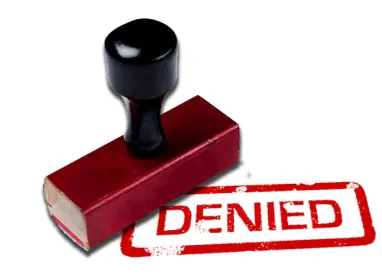In its Decision, the Board denied Petitioner’s request for an inter partes review of claims 1, 7, 8, 10, 11, 19, 20, 64-67, 70-72, and 74-76 of U.S. Patent No. 6,068,352. The ’352 patent relates to a brake controller for electrically actuated braking systems.
The Board began by determining that claim construction was not necessary for purposes of its Decision. The Board then considered “Ground 1,” whether independent claims 1 and 64 would have been obvious based on Eccleston and McGrath. The Board began its discussion of Ground 1 with a reminder that a petition for inter partes review must “identif[y] . . . with particularity . . . the grounds on which the challenge to each claim is based” and that the Board will “address only the basis, rationale, and reasoning put forth by the Petitioners in the Petition, and resolve all vagueness and ambiguity in Petitioners’ arguments against Petitioners.” The Board further explained that “the petition must include a detailed explanation of the significance of the evidence,” “must specify where each element of the claim is found in the prior art patents or printed publications relied upon,” and “must identify ‘the relevance of the evidence to the challenge raised,’ including ‘identifying specific portions of the evidence that support the challenge.’” As further discussed below, the Board “determine[d] that the Petition does not comply with these requirements and thus does not meet Petitioners’ burden of proof.”
With respect to claim 1, the Board found that the “broad circuit labels” that Petitioner used in the Petition (e.g., “an input circuit,” “a display circuit,” and “a power switching circuit”) when explaining the alleged applicability of Eccleston “do not correspond with the detailed recitation in claim 1 of the specific elements claimed.” As an example, the Board pointed to “the power switching circuit” in claim 1, which is “adapted for coupling to the brakes of the towed vehicle and to the power supply of the towing vehicle, for selectively supplying power from the towing vehicle power supply to the brakes of the towed vehicle in response to a switching control signal supplied to a control input terminal.” The Board concluded that Petitioners (1) did not “provide any explanation of the significance of the cited evidence to the specific power switching circuit limitations in claim 1,” (2) did not “specify where each element of the power switching circuit limitations in claim 1 is found in the [quoted] Eccleston passage . . . or in the cited portions from Eccleston,” and (3) provided “no persuasive explanation or analysis in the Petition of what in this extensive, generic passage corresponds to, or suggests, the ‘power switching circuit’ recited in claim 1.” The Board further determined that “Petitioners’ claim charts do not clarify Petitioners’ analysis and fail to compensate for the deficiencies identified above.”
Regarding claim 64, the Board stated that “Petitioners’ entire argument is ‘as shown in Grounds 1 and 3, many of the arguments for claim 1 above also apply to identical elements recited in this claim which merely eliminates one of the limitations of claim 1.’” The Board thus observed that “Petitioners do not identify which of the arguments from claim 1 apply, and which do not.”
The Board also considered whether Petitioner showed that “a person of ordinary skill at the time of the invention would have selected and combined [McGrath and Eccleston] in the normal course of research and development to yield the claimed invention.” The Board rejected as “conclusory” Petitioner’s statement that it would have been a “simple design choice” “to use the current sensing circuit [of Eccleston] with the microprocessor of McGrath to display the sensed current.” The Board also determined that Petitioners’ citations to paragraphs of an expert report violated its rules against incorporation by reference but also did not “specifically address the limitations in claim 1.”
Next, the Board considered Ground 3, which asserts that claims 1 and 64 are obvious over the same references discussed above, though applied slightly differently. Here, the Board determined that “Petitioners’ analysis of McGrath is cursory” and that the discussion of the rationale for the proposed combination was unpersuasive for the same reasons discussed above.
Then, the Board considered Ground 5, which asserted that independent claim 19 would have been obvious based on McGrath, Eccleston, and Domanico. The Board again determined that “Petitioners do not cite or otherwise direct us to evidentiary support for [their argument], nor do Petitioners explain persuasively how McGrath discloses or suggests this claim limitation” and that pages of an expert declaration incorporated by reference were not entitled to consideration.
Finally, the Board concluded that Petitioner’s additional arguments and evidence concerning Ground 2 and Ground 4 did “not compensate for the deficiencies in the evidence and arguments discussed above.”
Accordingly, the Board determined that Petitioners did not demonstrate a reasonable likelihood that they would prevail with respect to any of the challenged claims and, therefore, denied the petition.
Hopkins Manufacturing Corp. v. Cequent Performance Products, Inc., IPR2015-00616
Paper 12: Decision Denying Institution of Inter Partes Review
Dated: August 17, 2015
Patent: 6,068,352 B1
Before: William V. Saindon, Barry L. Grossman, and Jeremy M. Plenzler
Written by: Grossman



 />i
/>i

